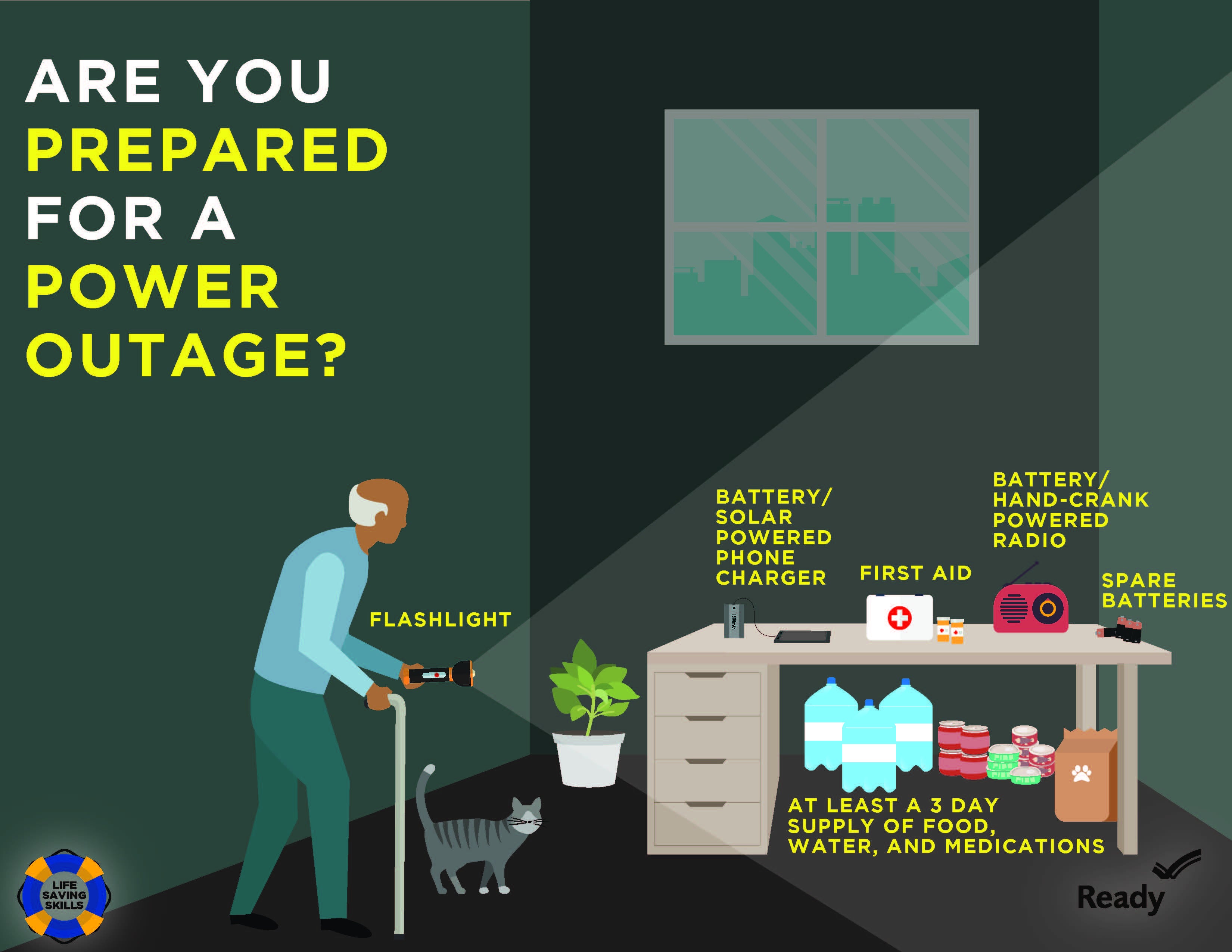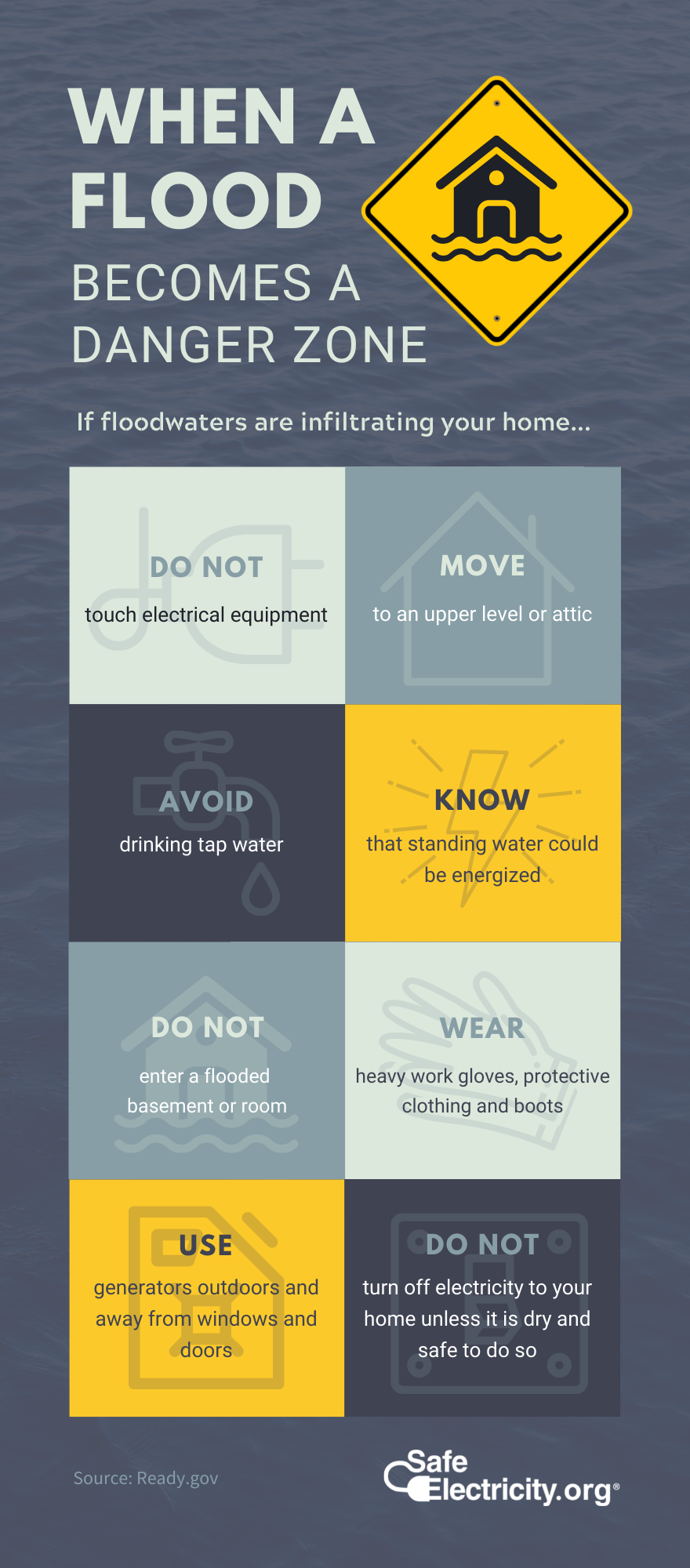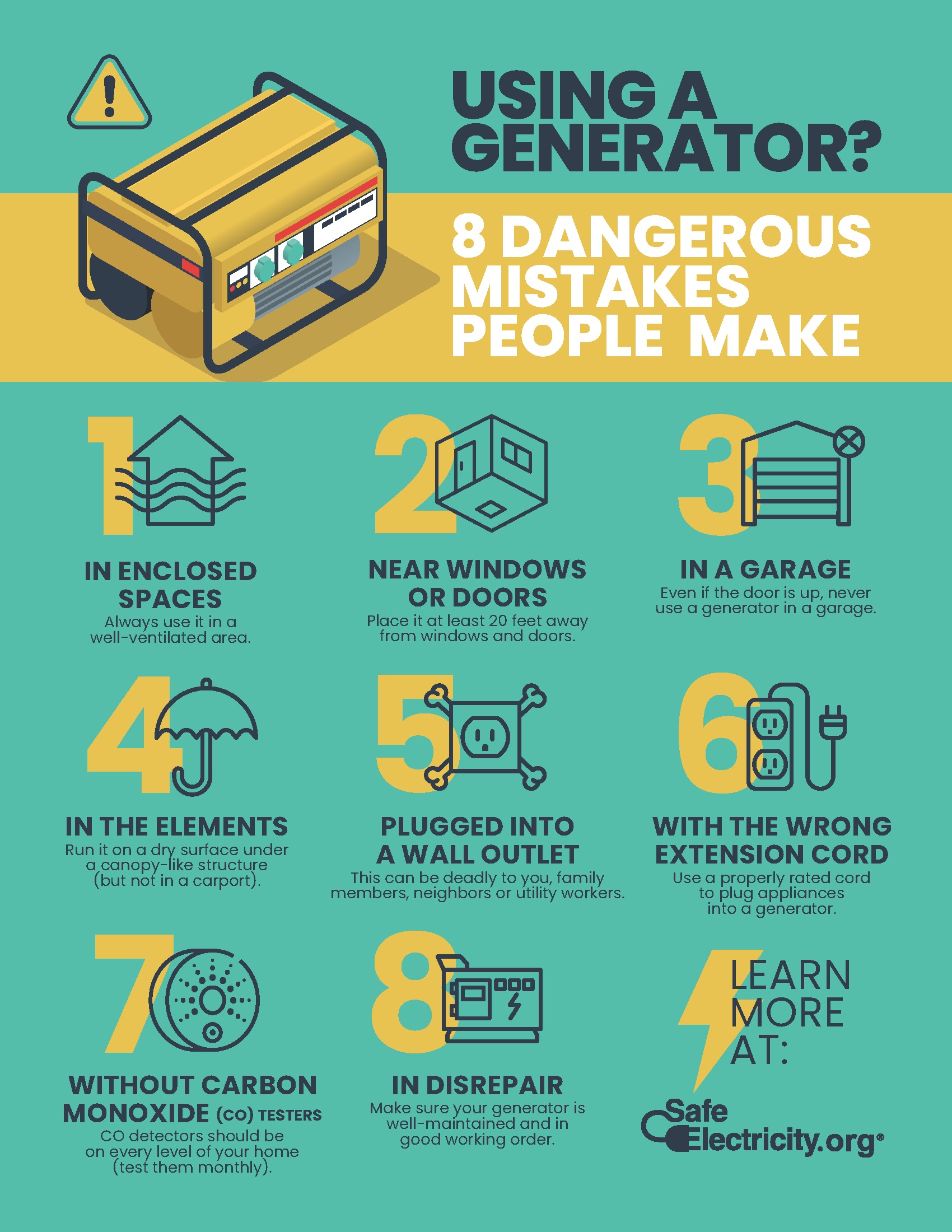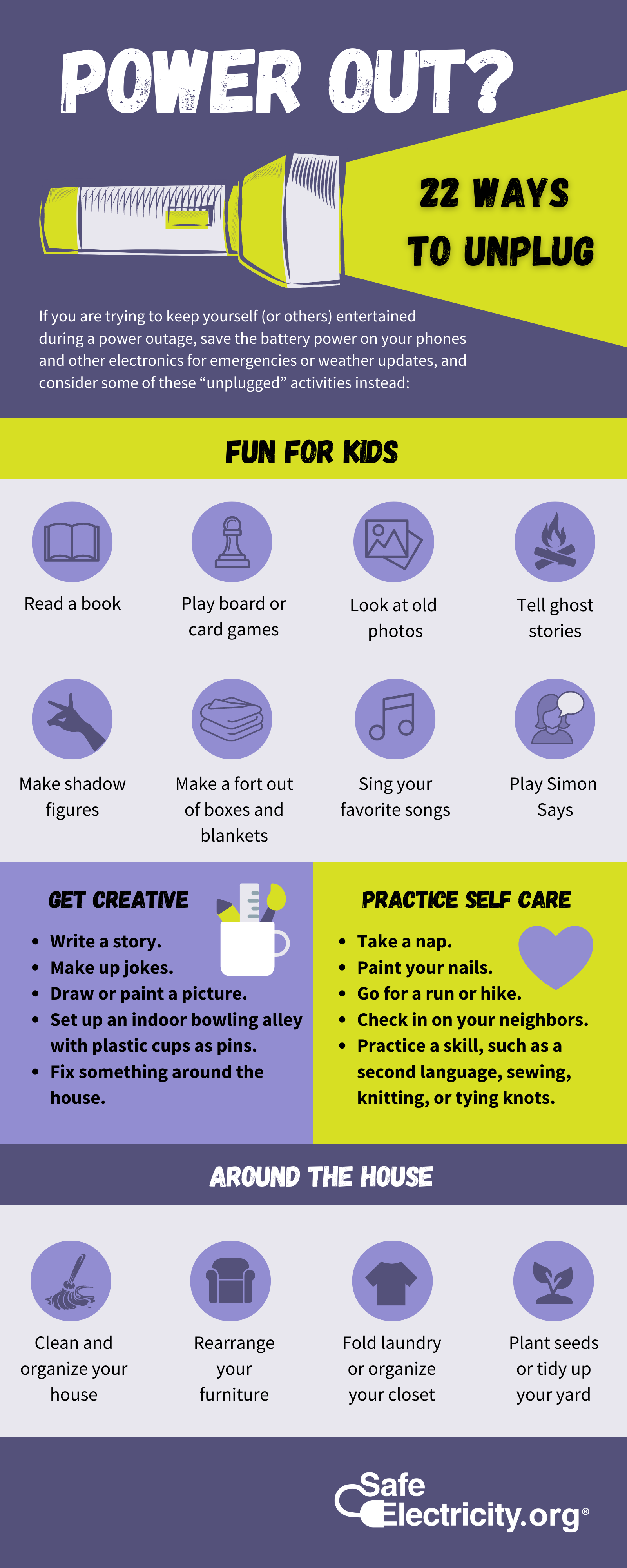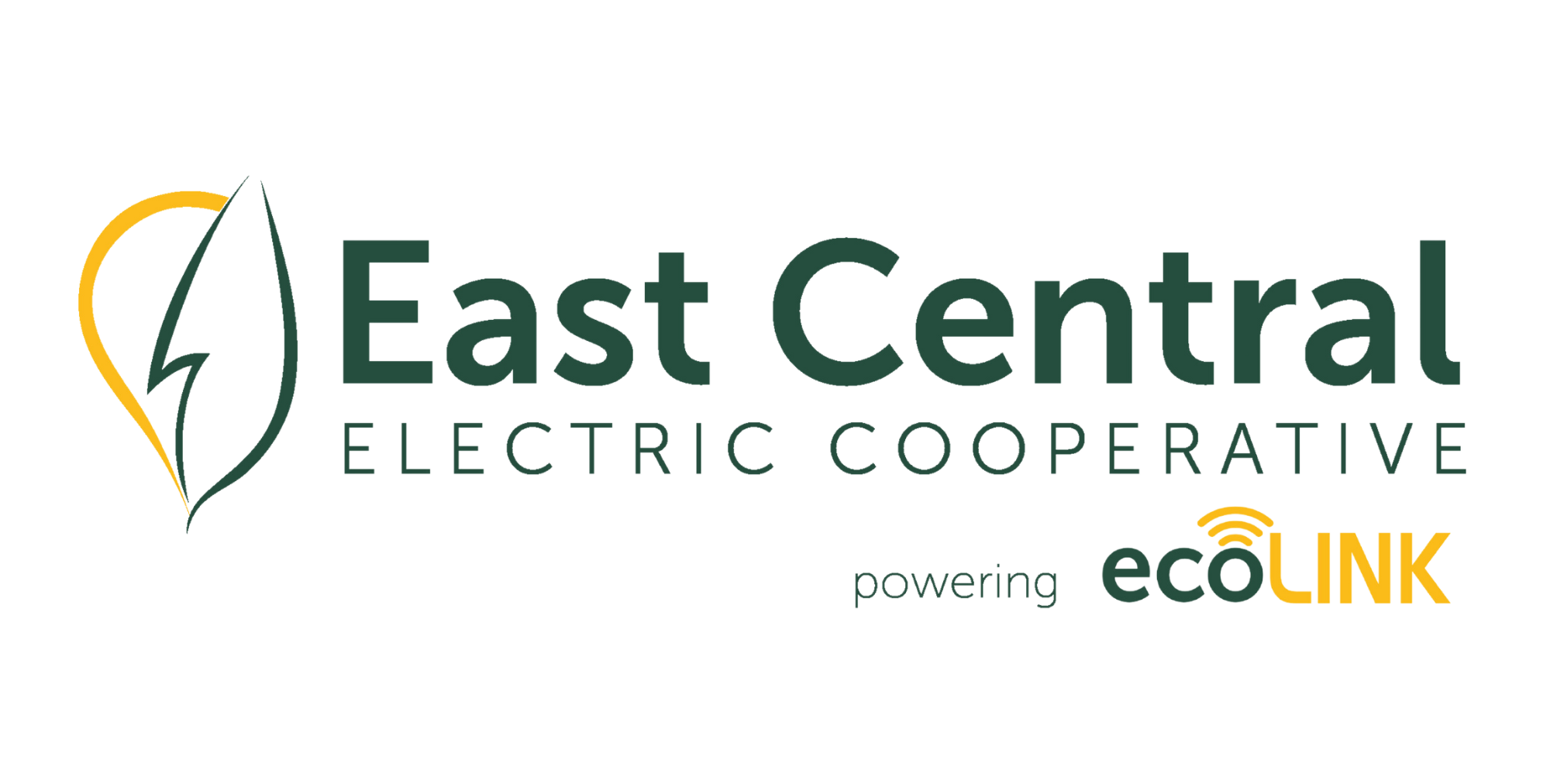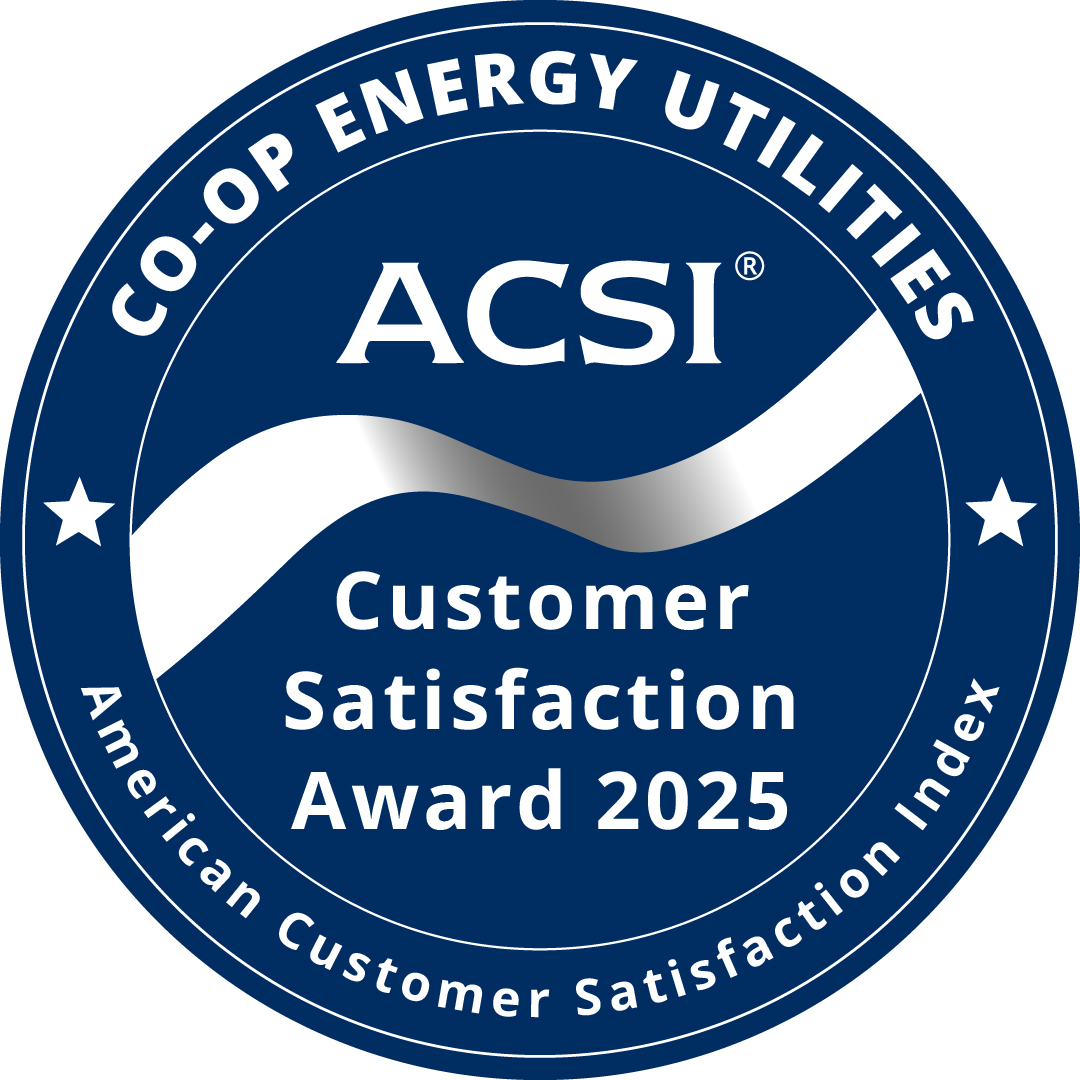Severe storms, unfortunately, do happen and are devastating to homes, properties, and lives.
These storms can also take down power lines—creating a dangerous situation for all of us, including the lineworkers working hard to get your power turned back on.
How long it takes to get your power restored depends on the extent of the storm’s destruction, the number of outages, and when it becomes safe for utility personnel to get to the damaged areas. There are many steps in the assessment and restoration process—clearing downed power lines; ensuring public health and safety facilities are operational; checking power stations and transformers; repairing transmission lines, substations, and distribution lines; and getting power restored to members within the various damaged areas.
Be sure to contact the co-op immediately to report the outage by calling 918-756-0833 or by using the SmartHub app.

We want you to know how to stay safe and get through until power can be restored to you. Please follow these safety precautions:
- Just because power lines are damaged does not mean they are dead. Every downed power line is potentially energized and dangerous until crews arrive on the scene to ensure power has been cut off. Downed power lines, stray wires, and debris in contact with them all have the potential to deliver a fatal shock. Stay far away and keep others away from downed power lines.
- Never enter a flooded basement if electrical outlets are submerged. The water could be energized.
- Do not turn power off if you must stand in water to do so. Call the cooperative, and have us turn off power at the meter.
- Before entering storm-damaged buildings, make sure electricity and gas is turned off.
- Do not use water-damaged electronics before properly restoring them. Electric motors in appliances should be cleaned and reconditioned before use. It may be necessary to replace some of your appliances and electronics. Have your water-damaged items inspected and approved by a professional before using them.
- If you clean-up outdoors after a storm, do not use electronic equipment when it is wet out.
- If you are driving and come along a downed power line, stay away and keep others away. Contact emergency personnel or the co-op to address the downed power line.
- If you do come in contact with a downed power line, do not leave the car. Wait for utility and emergency professionals to make sure the power line is de-energized before exiting the car.
During an outage, turn off electrical appliances and unplug major electronics, including computers and televisions. Power sometimes comes back in surges, which can damage electronics. Your circuits could overload when power returns if all your electronics are still plugged in and on. Leave one light on to indicate that power has been restored. Wait a few minutes and then turn on other appliances and equipment—one at a time.
To help you get through, have a storm kit prepared. Keep the kit in a cool, dry place, and make sure all members of the family know where it is.
Generator Safety
Generators can be a big help during an outage. Please follow these safety tips when using one.
Decide what needs powered. What appliances, devices, and equipment are essential? Choose a generator size that can handle the full load of the estimated power needed. Keep in mind that it takes more power to turn an appliance on—its surge power—than it does when in continuous operation.
Select the type of generator, either stand-by or portable. Stand-by generators are permanently wired into a house by a professional electrician. The installation should include a transfer switch that prevents feeding electricity back into overhead lines, which can be deadly for linemen. These generators are fueled by natural gas or propane from existing gas lines and automatically turn on in the event of a power outage.
A portable generator is typically fueled with diesel or gasoline, which must be regularly refilled. Unlike a stand-by generator, these must be turned on and off manually, and appliances must be directly plugged into the generator with a suitably rated extension cord.
Be aware of local ordinances. Depending on location, there may be electrical, positioning, or noise codes that must be followed when operating or installing a backup generator. Contact a local electrical contractor or generator dealer to help choose a code-compliant generator.
Once the generator is installed and ready to go, follow these safety guidelines to ensure the safe operation of the backup generator:
- Thoroughly read and follow all manufacturer instructions to properly ground the generator before turning it on.
- Do not connect portable generators directly to a home’s electrical system. Doing so could re-energize overhead powerlines and endanger the lives of utility linemen working to restore power.
- There should be nothing plugged into a portable generator before starting it to prevent a surge from damaging the appliance.
- When running a portable generator, always use properly rated extension cords (length and load) when connecting appliances.
- Always operate portable generators in a well ventilated space to avoid carbon monoxide poisoning and other harmful fumes. Never run a generator indoors.
- Generators can pose an electrical risk when operated in wet conditions. Make sure the generator stays dry during its operation, and never touch electrical equipment with wet hands.
- Exercise caution around portable generators, which have exposed engine parts that could burn or injure an individual. Keep children and pets away from a running generator.
- Use care when refueling portable generators to prevent potential fires and spills.
- Properly shut down portable generators by turning off and unplugging all appliances and equipment being powered by the generator.
- Remember to perform regular maintenance before and after each use. For portable generators, inspect oil and fuel filters, oil level, spark plugs, and fuel quality. Stand-by generators require less maintenance, but should still be inspected before and after power outages.
